Sharks are classified as carnivores, meaning that they like to consume the meat and flesh of other species. Since sharks are aquatic creatures, they often prey on fish, squid, crabs, and other marine creatures. But for some reason, sharks don’t like to eat clownfish. So, why don’t sharks like clownfish?
Sharks don’t like clownfish because they exhale a scent that several types of sharks find bland to their taste buds. But sharks have no dietary preferences. They just consume whatever is available to them. However, given that there are many sharks around the globe, their preferences in diet may vary somewhat.
This article will provide more answers to these ancient questions. In addition, we will also discuss the food preference of clownfish and sharks. Read on to this article till the very end to learn everything about it.
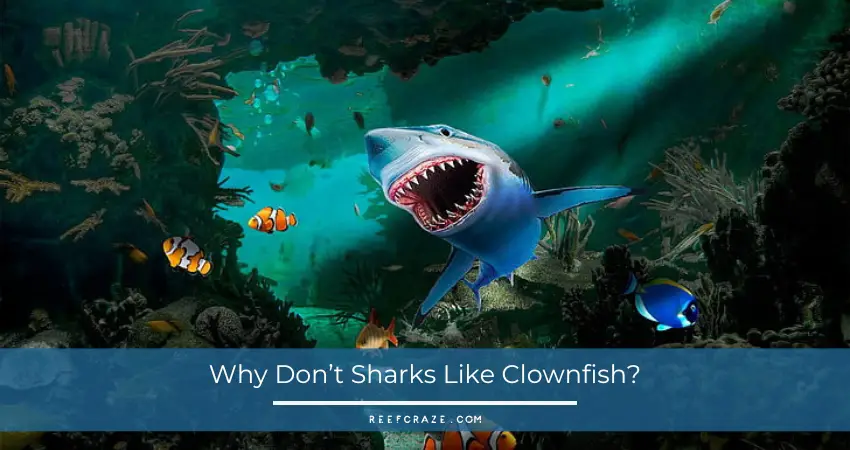
Are Clownfish Safe For Sharks To Eat?
Because of the unique coloration of their bodies, clownfish were easy to identify. Their bodies might be yellow, red, orange, or turquoise with white stripes, depending on the specific species. In addition to this, their maximum length ranges from only 5 to 12 centimeters.
The reefs that are protected from the open ocean are home to clownfish. They can survive in sea anemones because of the mucus that they produce. Their mucus serves as a shield against the venomous tentacles of the anemone. In addition to this, the fact that they are residents of this kingdom affords them safety from many dangerous animals.
One of these predators is the shark, which should come as no surprise. Furthermore, the shelter provided by the clown was a significant factor that contributed to the group’s ability to avoid being attacked. This is another reason why sharks don’t eat clownfish. In addition to their lack of size, sharks should avoid going to such areas since they are dangerous. They are vulnerable to the persistent sting of the anemone.
What Do Sharks Eat?
When you consider all the many types of sharks, you’ll see that their diets are highly diverse from one another. Most sharks are true carnivores and very effective predators. However, there are a few species that graze on plankton instead.
It depends on the kind of shark being discussed since different species consume different types of food. The primary element that determines the species and variety of prey that are accessible to sharks is the environment in which the sharks are found.
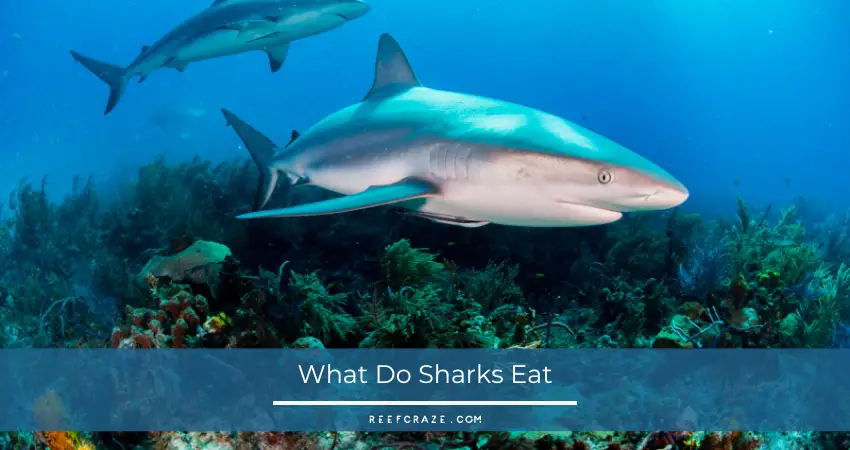
The food of the shark has evolved for it to live. Several species of sharks may prefer certain kinds of food. But when those sorts of prey are uncommon, the sharks may adapt their feeding patterns to consume whatever else is available.
Sharks aren’t fussy eaters and will eat just about everything. There is evidence that some sharks will consume everything that makes its way into the ocean, including coal, petroleum, garbage, and even human clothes.
According to the types of food they consume, sharks may be divided into two categories:
Carnivorous Sharks
Typically, fish, snails, and crabs make up most of the carnivorous shark’s diet. Big species are known to prey on marine mammals, including seals, penguins, sea otters, and cetaceans, along with large species of fish like tuna and salmon. Some sharks even eat small sharks as well.
Certain sharks are picky eaters and have very particular dietary requirements. For instance, hammerhead sharks, which belong to the family Sphyrnidae, consume almost entirely rays as their food source. But tiger sharks, which belong to the species Galeocerdo Cuvier, favor turtles. Whereas blue sharks, which belong to the species Prionace glauca, are partial to squid.
Carnivorous sharks are highly proficient hunters who use a variety of techniques to successfully capture their prey. Enormous species can consume an animal in its whole or rip them apart with strong teeth to get large portions. Saw sharks (family Pristiophoridae) twist the food as they are burying it in the sand. On the other hand, Thresher sharks (genus Alopias) use their tails to immobilize their prey.
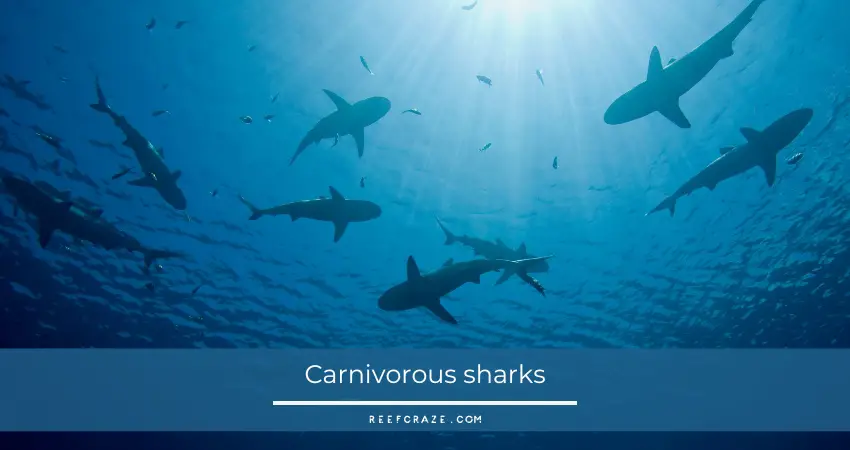
The ocean bottom is home to a wide variety of sharks, many of which are carnivores that use ambush strategies or camouflage to hide from potential prey. The only food that other types of benthic sharks eat is crabs, which sharks eat by smashing to pieces between their teeth. On the contrary, it is not uncommon for some animals to hunt together. By working together, they can amass a more considerable haul than they would if they went hunting on their own.
Sharks typically hunt older, weaker, or diseased animals, which help the fittest survive. The most resilient among us will prevail, while those who are weakest will be eliminated. Sharks that eat meat have very keen teeth, which enables them to swiftly tear through the flesh of their victim and even puncture the bones. Their teeth may be jagged or smooth, depending on the requirements of the different species. They use either kind to grasp, cut, or crush their prey.
Planktivore Sharks
Planktivore sharks don’t fit the conventional conception that we have of these creatures since they consume plankton without actively feeding on it. However, this is not inaccurate. Several bigger sharks prefer plankton over the flesh. The megamouth shark (Megachasma) and the whale shark (Cetorhinus maximus) are examples of these (Megachasma pelagios).
Their mode of eating consists of sucking in water and then filtering the food that is floating on top of it via long filaments that are reminiscent of whale beards. When there is enough, sharks will ingest the plankton that is caught in the filaments of their mouths. Peregrine sharks filter 3 million liters per hour to get 3 kg of plankton. Even though they have teeth, these teeth are quite little, and they are not used in the act of eating.
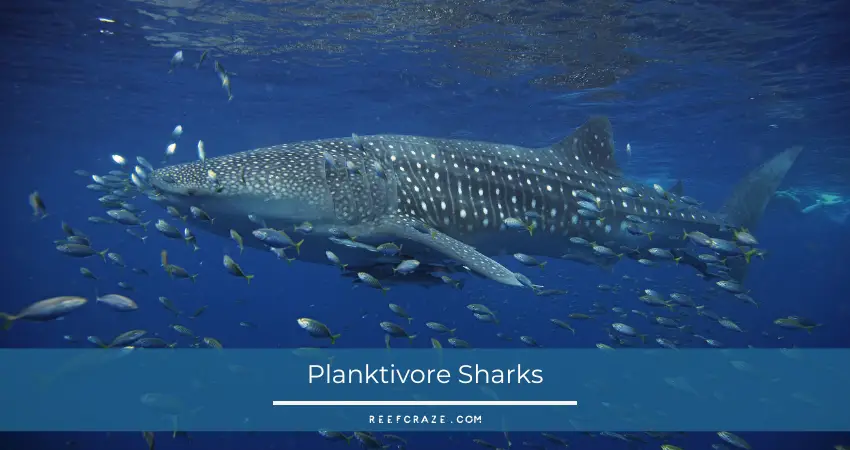
Carnivory is a characteristic shared by every single species of shark to some extent. In addition, even though it may seem amazing, they only ingest 2-3 percent of their body weight regularly. This is because they are unable to properly chew their meals and require a significant amount of time to process them.
Because sharks’ digestive systems are so unlike those of mammals, they have a far more laborious and time-consuming process of breaking down food. There is a spiral valve that is contained inside a shorter segment.
The digestive process starts when food travels from the mouth into the stomach, where it is stored and then released into the small intestine and the large intestine. If the shark believes that it has eaten anything poisonous, the stomach will not digest the meal. The shark will instead vomit it out via its mouth.
How Much Do Sharks Eat?
The number of calories that a particular species of shark consumes daily is related to the size of the shark.
Some kinds of sharks will have enormous meals and then go for long periods without eating again. They can subsist on the fat that is kept in the liver from the times that they have eaten. When it comes to a certain point, they will be driven by instinct to start eating again.
Because sharks are cold-blooded, they don’t need as much food as most people believe they do. Because of this, they can burn energy at a very low rate. This allows sharks to consume less food while still maintaining their energy levels.
As can be seen, sharks consume a diverse range of food items. Even though most of them are carnivores, meat isn’t the only item on their menus. The many species of sharks that exist today are the product of evolution that has taken place over millions of years. They have survived by eating what is easily accessible, which is required for them to reproduce efficiently and maintain their health.
Which Fish Like To Eat Clownfish?
A few sharks and other huge fish are common eaters of clownfish. Most carnivores don’t eat much clownfish, but some do. This list includes some small sharks and turtles, which can get nutrients from the little fish.
Seabirds like the frigate bird and the golden eagle consume clownfish as well. When clownfish are available during their hunting flights, seabirds consume them. Other predators that eat clownfish include barracudas and snappers, which attack them from the head and consume them whole.
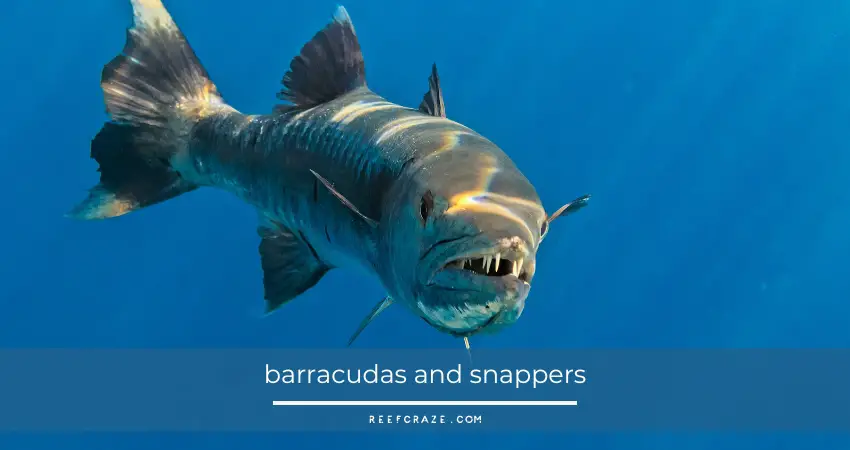
Clownfish are plucked out of the water by seabirds like albatrosses, gulls, and petrels. Silky sharks and reef sharks attack clownfish by grabbing them in the skull or the fin and then pulling them into the deep ocean to consume them.
Can Clownfish Co-Exist With Sharks?
While certain species of clownfish can co-exist peacefully with sharks, other kinds of clownfish are likely to avoid them. If you wish to maintain a clownfish in an aquarium, it is ideal to pick one that has a varied ecology. This will ensure that the fish have lots of alternatives for shelter and nutrition should they get hungry or feel the need to hide.
In a nutshell, clownfish are a kind of fish that are compatible with the company of sharks. Clownfish are not typically prey for sharks. However, this may change if the clownfish were in the shark’s domain or if the shark was very hungry.
Read More: Clownfish tank mates
Frequently Asked Questions
Why do sharks not eat clownfish?
Do great white sharks eat clownfish?
How do clownfish survive predators?
Wrapping Up
The fact that sharks would rather eat anything else explains why they usually don’t consume clownfish. It is also important to remember that the location of the clownfish is not positioned advantageously for sharks. The sharks should avoid getting too close to the sea anemones at all costs.
Additionally, a shark’s appetite might change based on the species. Some species of sharks could eat either plants or meat or perhaps both. However, some small shark species do eat clownfish as they are easy to catch.
